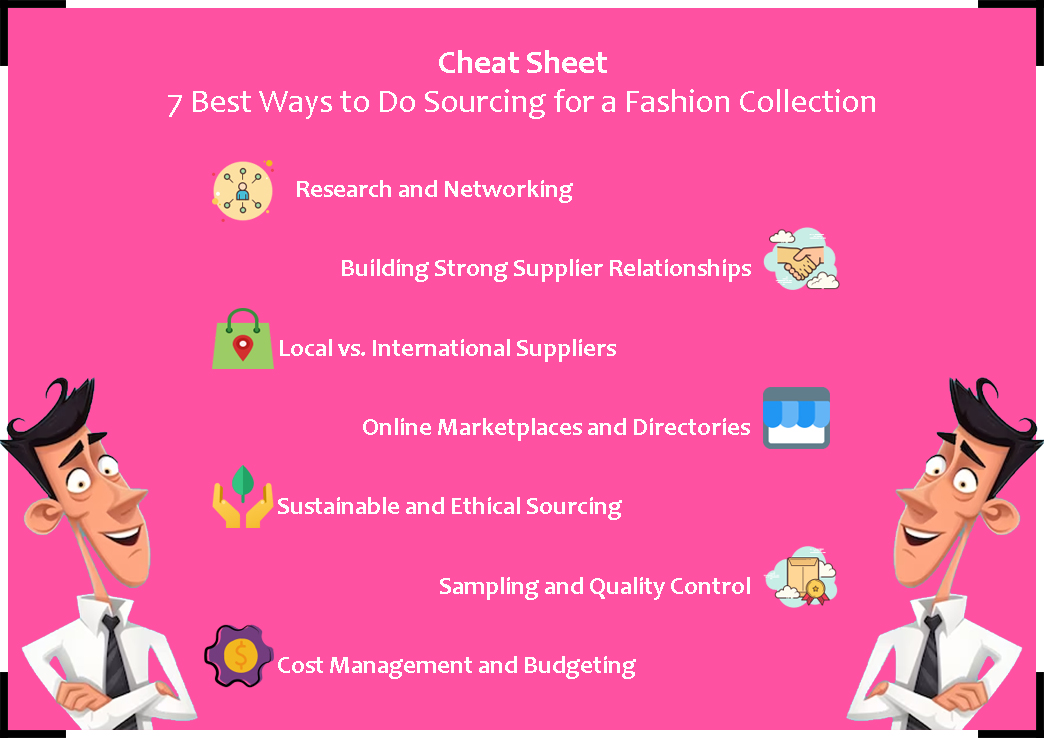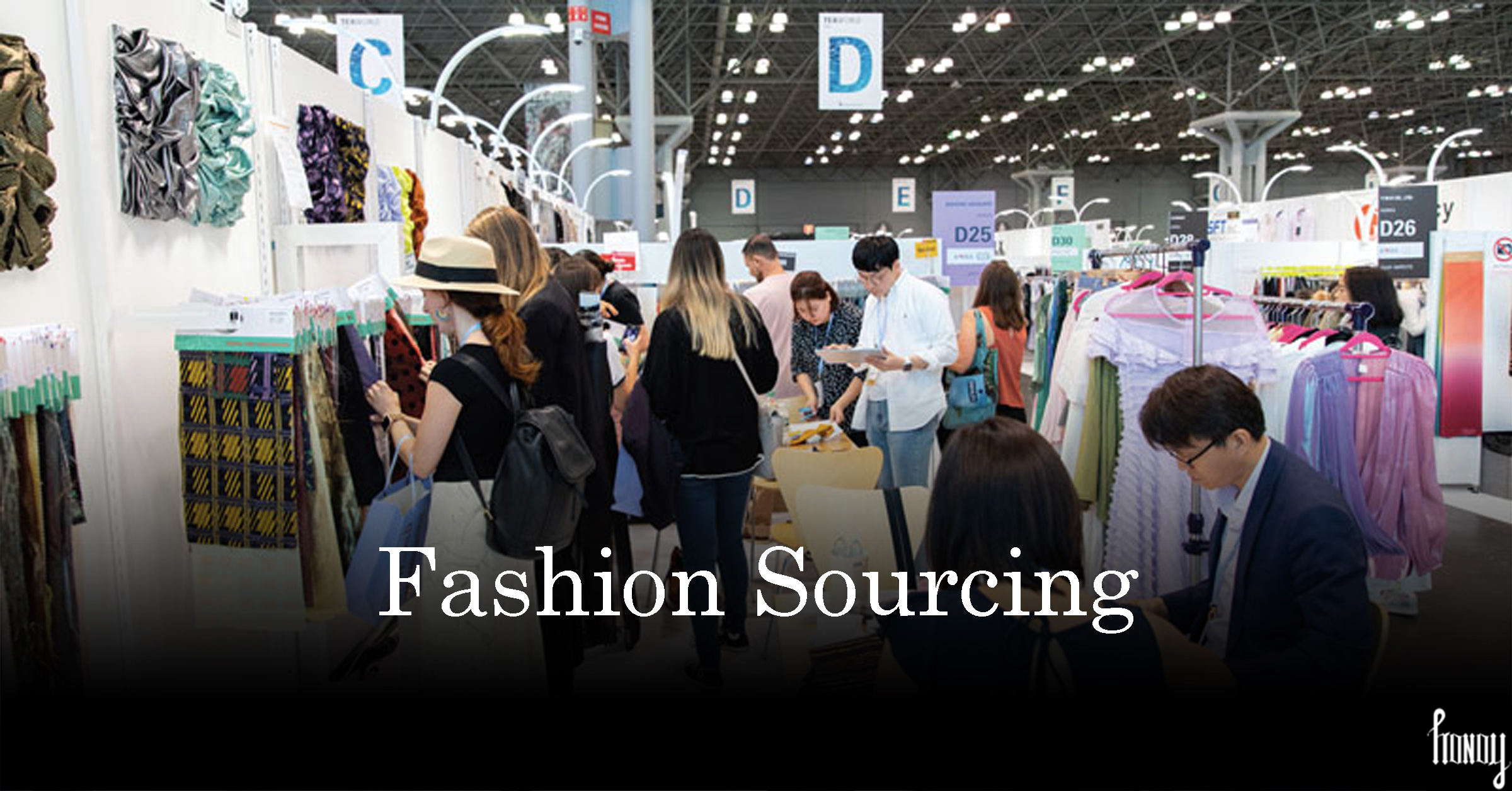Introduction to sourcing for a fashion collection
While for an outsider the business and workings of the fashion industry may seem totally chaotic, but only an insider knows that hoe meticulously each phase is organised in this system in order to produce the perfect fashion collection. In my previous blogs I have covered essential topics like ‘Researching for a Fashion Collection’ and ‘making Fashion Mood Boards’. Following this trail, our next major step in creating a successful fashion collection is to do a strong and appropriate procurement of materials for the magic of fashion to happen. This process of collecting the fabrics, accessories, beading material, fasteners etc. is called ‘Sourcing for a Fashion Collection’.
Sourcing for a fashion collection is a crucial element in the process of making one. In the fashion industry sourcing directly impacts the quality, cost, and overall success of a fashion collection. Well planned and effective sourcing can elevate a fashion collection, ensuring that it stands out in a competitive market. Here, in this blog we will explore seven of the most efficient and time-tested ways to do sourcing for a fashion collection, providing practical tips, examples, and insights to help you navigate this essential process.
1. Research and Networking

Image Courtesy: https://www.reviewjournal.com/
The first step in building a strong foundation for all future sourcing activities is to build a habit of research and create a network. Conducting thorough research is a practice every fashion designer and fashion merchandiser must develop to stay ahead in the creative/novelty curve. One should begin by exploring all available nearby industry sources through local industry bodies that must be running the fashion industry network in one’s area. Attending trade shows, scouring the local markets is a great way to get to know suppliers that are available in one’s vicinity. Beyond this for international connections attend trade shows like Première Vision in Paris or MAGIC in Las Vegas to discover new materials and build relationships with suppliers.
Example: Designer Stella McCartney is known for her commitment to sustainability. By attending industry events and networking, she has established a network of suppliers who provide innovative, eco-friendly materials.
2. Sustainable and Ethical Sourcing
In the context of todays consumerism and global environmental concerns, the importance of sustainability in fashion cannot be overstated. The modern, aware consumer is increasingly demanding transparency and ethical practices from fashion brands and fashion businesses – big or small. Thus, in this scenario, sourcing sustainable materials not only benefits the environment but also enhances your brand’s image.
Look for certifications like GOTS (Global Organic Textile Standard) and Fair Trade to ensure your suppliers meet ethical standards. Brands like Patagonia and Eileen Fisher have set benchmarks in sustainable sourcing, proving that it is possible to align profitability with ethical practices. Promote local suppliers and manufacturers to reduce transportation costs. These are few of the ideas one can follow to include sustainable practices in one’s sourcing activities.
Statistical Data: According to a 2020 McKinsey report, 67% of consumers consider the use of sustainable materials to be an important factor in their purchasing decisions.
3. Online Marketplaces and Directories
A major change in modern times in sourcing has happened because of the digital revolution. With the explosion of online platforms like Alibaba, Maker’s Row, and ThomasNet, global sourcing has been made sourcing more accessible. These digital directories offer a wide range of suppliers, making it easier to find specific materials and components.
Tips for Effective Use of online resources:
- Try using filters to narrow down suppliers based on criteria such as location, certification, and minimum order quantity.
- Always read reviews and request samples before ordering in bulk to assess the quality of materials. And make sure to ask if they can provide the same quality for future orders.
- Utilize communication tools provided by these platforms to negotiate terms and build relationships with the vendor. When and if possible make sure to meet with them personally and see there facilities in person to strengthen that bond.
Example: The startup brand Everlane uses Alibaba to source materials, ensuring they meet the brand’s strict ethical guidelines.
4. Local vs. International Suppliers
In today’s world of globalisation and the added consideration of sustainability, it is imperative to carefully think when deciding to choose to source from a local or an international vendor. There are multiple factors that will come into play when making a choice like cost, lead time, and quality. Let us examine the benefits and challenges for both of them.
Local Suppliers:
- Benefits: One of the most evident benefits of dealing with the local supplier is the shorter lead times, which effectively reduces shipping costs. Also, easier communication and physical interaction with the supplier is also an added advantage.
- Challenges: On the downside, sourcing from a local supplier could mean higher costs and limited variety.
International Suppliers:
- Benefits: In direct contrast to the local supplier when dealing with an international supplier, the most evident benefit is the access to broader range of materials in terms of variety and quality and that to at lower costs.
- Challenges: Internation supplier means longer distances which in turn creates longer lead times and higher shipping costs. A minor inconvenience could be the language barrier.
Example: Lululemon sources materials both locally and internationally, balancing cost and quality while ensuring timely production.
Read more on this topic here.

5. Building Strong Supplier Relationships
A key aspect to creating a strong library of materials and doing successful sourcing for fashion collection is to develop and maintain strong relationships with the suppliers. Good communication and collaboration with the suppliers will always lead to better terms, higher quality, and reliable supply chains. And sometimes the underscored benefit is that the supplier keeps you in touch with the latest material available in the market without you making the needed effort.
Few tips to build better ties with the suppliers:
- Schedule regular check-ins with suppliers, make sure they are also functioning smoothly. Interacting on a social level to build a personal connect.
- Visit factories and warehouses to understand their processes and in return inviting them to do the same in order to build a mutual respect for each other’s challenges and restrains.
- Always be transparent about your needs and expectations and do the same when need from you and expect from you.
Example: Nike invests in long-term relationships with its suppliers, often providing training and support to help them meet the brand’s high standards.
6. Sampling and Quality Control
One of the most important pillars of brand building is the sampling process. The end client will only trust a brand if they provided and maintain consistency in quality of the product. Thus, season after season, for each fashion collection it is essential that material being used is of the most optimum quality for that bracket. And so, it is crucial for assessing the quality of materials and components when sourcing for any fashion collection. Make sure you have researched a lot of options in the market before settling onto one supplier. And always request samples before placing large orders to ensure they meet your specifications.
Quality Control Strategies:
- Research and set clear quality standards and communicate them to your suppliers. Make sure your standards are feasible and well within the target budget of your fashion collection.
- Implement a rigorous inspection process for incoming materials and always compare them to the sample that was sourced initially.
- When dealing with extreme high levels of fashion i.e. for ‘couture’ garments, try and use third-party testing labs for additional quality assurance.
Example: Zara employs a robust quality control process, enabling the brand to maintain high standards while producing fast fashion items quickly.
7. Cost Management and Budgeting
When planning for the sourcing of material for production purposes, keep in mind the two aspects of ‘effective cost management’ and ‘budgeting’. These two are as essential for the success of any commercially viable fashion collection as the creative side. Thus, it is always essential to keep your sourcing process financially sustainable. Every time when planning for a new fashion collection, analyze costs carefully and negotiate terms without compromising on quality.
Few tips for cost management:
- Create a detailed budget that includes material costs, shipping, and potential tariffs. And always add the overheads for this entire exercise.
- On a regular basis, compare quotes from multiple suppliers in the market to find the best deal.
- Consider the total cost of ownership, not just the initial price.
Example: H&M uses a combination of cost management techniques and bulk purchasing to keep prices low while maintaining quality.
Conclusion
In a concluding statement it can be said that strategic sourcing is vital for the success of any fashion collection. By implementing these seven strategies of sourcing for a fashion collection, you can ensure that your materials and components meet high standards of quality, sustainability, and cost-effectiveness. By following these guidelines, you can navigate the complexities of sourcing and create a fashion collection that stands out in quality and sustainability.
Hope this blog was helpful and informative. If you have any sourcing tips or experiences to share? Leave a comment below!




























